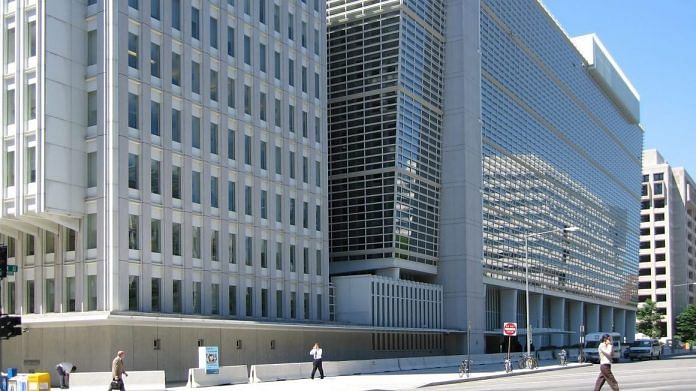Most people would agree that rich countries have a moral obligation to help poor countries grow. One of the main ways wealthy countries try to do this is with “official development assistance” — foreign aid designed to boost poorer countries’ economies. ODA has increased substantially since the turn of the century:
Most of this aid is given directly from one country to another. But a substantial fraction is given through the World Bank, the United Nations and other international agencies. Thus, it naturally caused a stir when three economists who regularly work with the World Bank submitted a working paper claiming that a substantial amount of aid is pocketed by elites in recipient countries.
Jørgen Juel Andersen, Niels Johannesen, and Bob Rijkers found that when the World Bank disburses a payment to a country that’s very dependent on foreign aid, deposits to Swiss banks and other foreign havens experience a sharp and immediate rise from that country. No similar rise occurs for banks in countries with more transparent financial systems, such as France or Germany; it seems clear that whoever is moving aid payments out of recipient countries wants to keep it secret.
Since the average citizens of a developing nation don’t tend to have Swiss bank accounts, and since companies would tend to deposit the money in New York City or London rather than Zurich, it stands to reason that politically well-connected individuals are simply pocketing some of the cash — perhaps around 5% to 7.5% of the total aid.
That isn’t a huge amount, but it could be just the tip of the iceberg when it comes to misuse of funds. In addition to being stashed away in Swiss banks, aid money might be directed to politically well-connected but unproductive companies or used to buy consumption goods for friends and supporters of the ruling regime. Some earlier papers on the topic have found that aid dollars tend to be mostly spent on consumption goods, with little or no detectable effect on investment or growth. Andersen, Johannesen and Rijkers’ study suggests that this consumption could be flowing to those who need it least.
Also concerning is the fact that the effect tends to be stronger the more dependent a country is on foreign aid. For the most aid-dependent countries studied, around 15% of World Bank payments quickly found their way into Swiss banks. These tend to be some of the world’s poorest nations.
The finding suggests that aid may be actively causing political dysfunction in these countries. Much like natural-resource revenues, aid money may stabilize the power of a corrupt elite, allowing them to enrich themselves without providing education, health, infrastructure and other public goods that would benefit their countries as a whole. A number of economists have accumulated evidence on the disconcerting similarity between foreign aid and natural-resource endowments.
If too much aid functions as a political and economic curse, that would bolster the arguments of aid critics such as economists Dambisa Moyo and William Easterly. It would potentially vindicate the actions of President Donald Trump, who has moved to cut foreign aid. It could even call into question one of the core functions of the World Bank itself. Perhaps it’s not surprising that there are rumors that officials at the Bank tried to block publication of Andersen, Johannesen, and Rijkers’s paper, prompting the organization’s chief economist, Penny Goldberg, to resign.
Defenders of foreign aid will no doubt have a riposte to these criticisms; the debate over aid is an old one, and won’t be resolved by one more study. But there are several things that rich countries can do in response to the accumulation of evidence on the dangers of too much aid.
The first is to not give any country a large percent of its economic output in terms of development aid — say, no more than 10% — over a long period of time. That should help prevent toxic political effects.
The second is to rely more on other forms of income transfer from rich countries to poor ones. Two major alternatives are remittances and foreign direct investment. Remittances, which are already more than three times larger than aid as a source of income for poor and middle-income countries, require wealthy countries to allow in foreign workers, either as immigrants or as guest workers.
Foreign direct investment, meanwhile, doesn’t just transfer income — it helps poor countries grow economically so that eventually they can provide for themselves. Even the musician Bono, long known as a supporter of foreign aid, has recognized that investment and growth are ultimately a more powerful tonic for fighting poverty.
So there are better ways to help developing countries. It’s OK for rich countries to cut payments to the most aid-dependent countries, as long as they replace the lost cash with FDI and remittances.-Bloomberg
Also read: India 76th out of 82 countries on World Economic Forum’s global social mobility index







I want to help poor people who are facing poverty in their life regarding literacy fooding and lodging.
There are two ways to help developing countries. One is to directly assist the citizens of that country to migrate to other countries where they can earn some substantial revenue. But, there is an even better one. One can set up some entire national immigration programs whereby large portion of the population of that country who want to migrate are assisted in doing it, and find employment in the destination country. In both cases, both countries benefit in some ways. In this way, the entire cycle is carefully controlled and followed up.
I would go for such an approach.
Do see the book “So Much Aid, So Little Development: Stories from Pakistan” (Johns Hopkins University Press, 2011) for examples of the impact of development aid in South Asia,
You mean in INDIA?